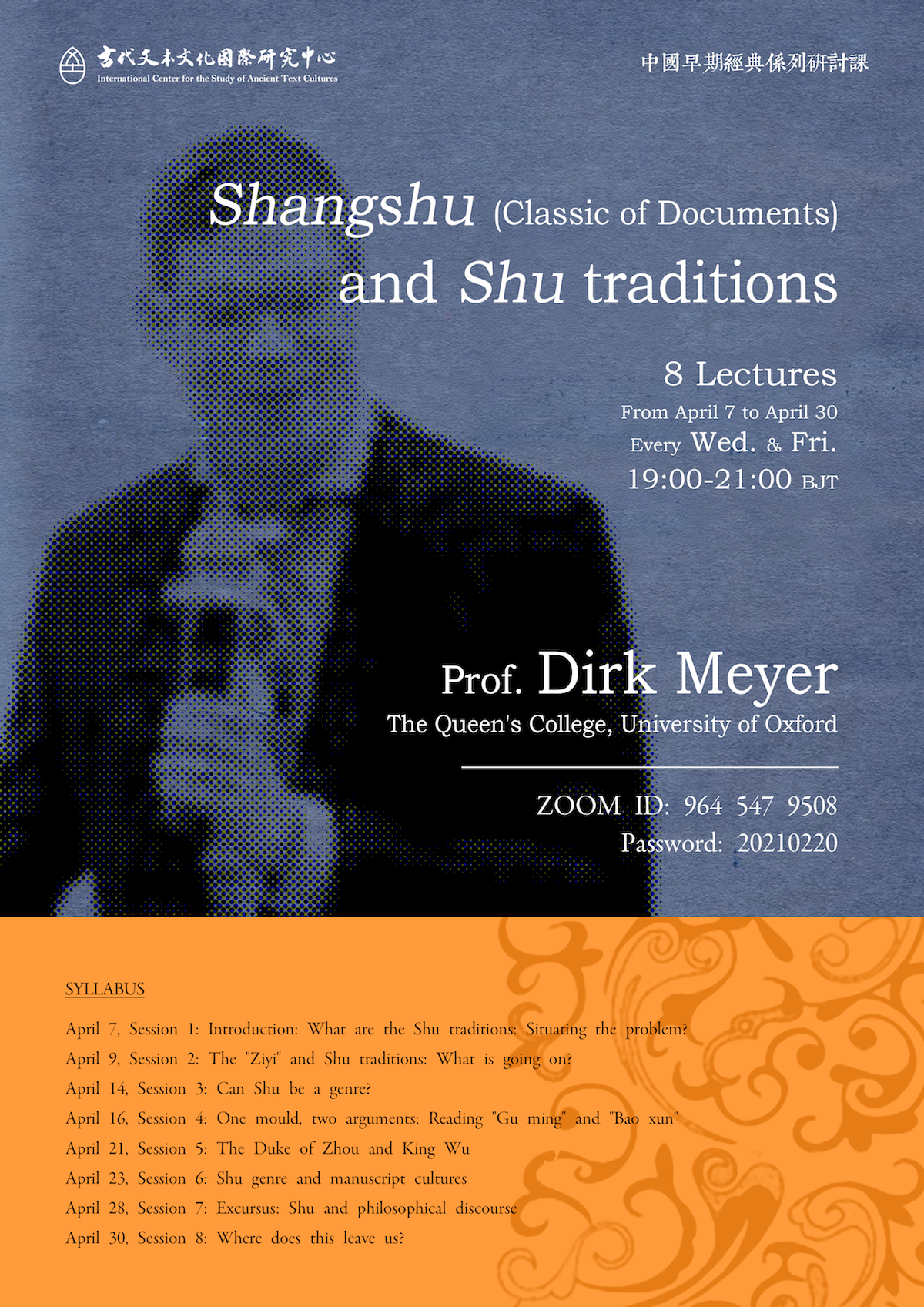[Upcoming] Signing Up For Prof. Dirk Meyer's Lectures: The Shū Traditions and Philosophical Argument in Early China
发布时间:2021-03-12
Lecturer: Prof. Dirk Meyer (The Queen's College, University of Oxford)
Language: English
Zoom ID: 964 547 9508 (Password: 20210220)
Time: 8 Lectures, from April 7, every Wed. and Fri. 19:00-21:00 BJT.
Registration: https://www.wjx.cn/vj/YQnqg6y.aspx
Course Outline:
April 7, Session 1: Introduction: What are the Shu traditions: Situating the problem?
April 9, Session 2: The "Ziyi" and Shu traditions: What is going on?
April 14, Session 3: Can Shu be a genre?
April 16, Session 4: One mould, two arguments: Reading "Gu ming" and "Bao xun"
April 21, Session 5: The Duke of Zhou and King Wu
April 23, Session 6: Shu genre and manuscript cultures
April 28, Session 7: Excursus: Shu and philosophical discourse
April 30, Session 8: Where does this leave us?
Course Description:
The Shàngshū is difficult to read. Its language is archaic, often opaque. For the most part the Shàngshū is just a collection of speeches ascribed to rulers and ministers of high antiquity. Very little in it is presented in the form of a narrative.
The Shàngshū—as well as the traditions preceding it—arguably structured the experience of vastly different groups; at the same time, the experience of these groups also structured the Shàngshū, one witness among potentially many more of the Shū traditions. It is a dialectical relationship where one moulds the other. As will be explored in the lecture series, Shàngshū-style speeches served as the source material for the development of a wide range of sociophilosophical arguments in the second half of the first millennium BC, with different groups using them as suited their needs. The ways these communities resourcefully utilise the Shū traditions—of which the Shàngshū is but one expression—in service of their agenda will be the focus of the eight sessions as we look at the strategies to materialise the past for ends in the present.
This lecture series gives no history of the Shàngshū. Rather, it sets out to conceptualise what I think of as Shū genre, a historically evolving practice of literary production, suitable to deliver a variety of arguments. In this series I shall do so by approaching the Shū traditions—in the first instance these are defined by texts collected in the Shàngshū, Yì Zhōushū, and related manuscript texts—from a number of complementary analytical angles, enquiring into matters such as the position of Shū in the framework of elite learning; the inter- and cross-textual networks that involve the Shū; the shifting patterns of narrative production around Shū speeches; the creative recontextualisation of authoritative text material by participating social groupings; genre formation; and the performative dimensions inherent to acts of text delivery and text reception.
With the focus on how the Shū work as a genre, matters of intertextuality—processes by which a culture ‘continually rewrites and retranscribes itself’—are central. We shall explore its various facets in the different lectures.
Below is the plan for the Shu lecture series:
Prof. Meyer' lectures are part of our Spring 2021 lecture series on the textual culture of early China.
To find out more about other lectures, please click here.
For questions, please write to: ruc_icsat@163.com